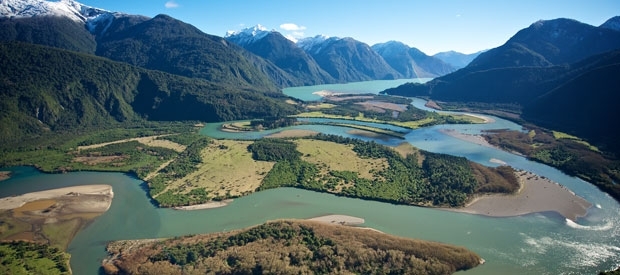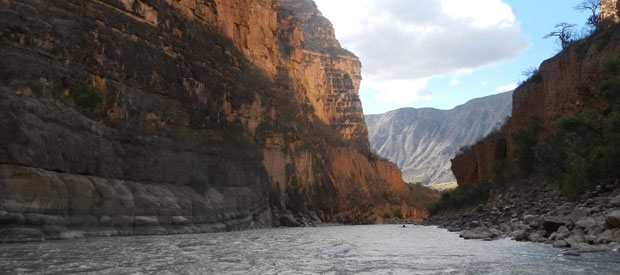Current Campaign
From snow-capped mountains to Amazonian rainforests, Latin America is home to the Andes-Amazon, the largest freshwater system on the planet. But this vast biome is facing unprecedented threats from a surge in hydroelectric dam construction, pollution and transportation mega-projects.
“In a very short time, our species has caused great changes to the biosphere. Some call our era ‘the Anthropocene.’ We can talk and write forever about the causes of this, and propose many measures…but conservation and restoration are an obvious answer that is in everyone’s sight.”
Macarena Soler
Background
Burgeoning with vitality and biodiversity, Latin America is home to the Amazon, the world’s largest watershed, as well as the massive Amazonas and Guarani aquifers.
For many years, many Latin American rivers were protected from rampant exploitation by their very remoteness. But in recent decades, the pace of development has picked up: Corruption-laden dam projects have proceeded across the region, attended by transportation projects such as ports, hidrovías, roads and railroads – all conceptualized as large-scale export corridors for agribusiness and mining. The relentless push for resources is trampling the rights of local communities, leading to violence, environmental degradation and displacement.
We are working to win permanent legal protection for free-flowing rivers and freshwater ecosystems in Brazil, Chile, Peru and Colombia. We’re supporting rights of river judicial cases for the Marañon and Santiago rivers in Peru, the Anchicayá River in Colombia, and the BioPacífico Colombiano.
Threats
Mining is a remarkably polluting industry, and much of that pollution ends up in Latin American waterways. Tailings and other pollution degrades water quality, impacting biodiversity and adversely affecting human health. Any river protection laws must address mining activities within the watershed. [Source]
Healthy forests are integral to healthy rivers, impacting water quality and availability as well as biodiversity. Trees are both natural sponges — absorbing and then releasing water when it’s needed — and expert water filters that can reduce pollution in rivers. True river protection laws must protect strips of riparian forest. [Source]
Whether it stems from industrial practices or municipal waste, water pollution in Latin America is a major problem. The region lacks firm water quality standards, and polluters are seldom held to account. Good river protection legislation will codify best practices and standards, and will eliminate loopholes in the “polluter pays” principle.
Many Indigenous and traditional riverine communities rely on their rivers for food, irrigation and cultural practices. But river defenders are frequently targeted when they stand up for their communities and waters. Permanent legal protection could offer another layer of protection to vulnerable and Indigenous communities. [Source]
Quick Facts
- Latin America is home to approximately 30% of the world’s freshwater.
- Pollution, damming, extraction and climate change are harming these freshwater resources.
- The region is home to one of the most vibrant river protection movements in the world.


